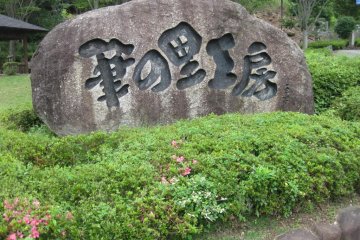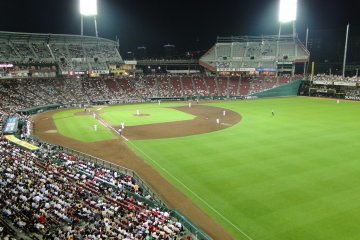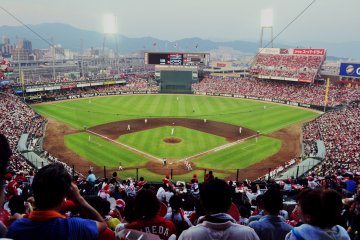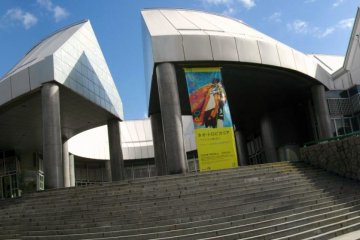Every year on the day of the Autumn Equinox, usually September 22nd or 23rd, the usually quiet town of Kumano, located to the east of Hiroshima city, pays thanks to the product that has put it on the map - the fude (brush).
Kumano's love affair with the brush began towards the end of the 18th century, when the people of Kumano began to resell fude brushes and sumi ink imported from Nara prefecture to supplement their agricultural income. When, during the mid-19th century, the local ruling Asano clan began a program to encourage the development of crafts in the region, Kumano fude producers began to hone their skills. They have never looked back.
Today about 1,500 people are involved in the business of making brushes, and Kumano produces over 80% of Japan's calligraphy, painting and make-up brushes. In recent years, their high quality brushes have also been well received in the global market.
The Fude Matsuri, or Brush Festival, dates back to 1935 and is all about the brush. You'll find them everywhere. Those interested in calligraphy and the art of brush-making, will feel like they are in heaven. That said, even those with only a passing interest in the art of the brush will find more than enough to keep them entertained throughout the day.
The festival starts with a calligraphy performance - written on a huge canvas with a giant brush. A famous calligraphy master gracefully manipulates the brush, smearing ink across the canvas to create meaningful expressions. These masterpieces are quite stunning, and when completed are erected nearby for all to admire.
One of the highlights of the festival is the dragging of a huge higanbune ship, festooned with decorations, by burly local men in traditional garb up a steep hill into the forecourt of Sakakiyama Shrine. Here the ship is spun vigorously around and around. Locals then crowd around to try to catch lucky mochi rice cakes thrown from the ship.
A charming traditional dance performance by women in hapi-coats holding the famous brushes follows. There are also many food and game stalls in this area around the shrine, as well as a flea market around the back.
Back down below, there are performances throughout the day. When things start to wind down taiko drums and other instruments are left out and children are welcome to bang away.
You'll also see a fire down here where the ritual burning of used brushes takes place. It is believed that brushes should be burnt each year, and new ones bought to bring the user good luck - it's also good for business, I'm sure. Many people bring brushes to dispose of here, but there are also lots of old brushes supplied, so even the casual bystander can take part in the ritual.
In a nearby school, there are calligraphy lessons and areas for festival goers to try their hand at the different brush arts. You can also purchase calligraphy art creations or ask get one custom-made.
Beyond here is yet another arena, in the schoolyard, where there are lots of food and drink stalls, as well as a stage on which community groups perform one after the other. There is plenty of seating in this area and food stalls are plentiful.
All in all, a visit to the Kumano Brush Festival is a great day out. There is so much going on, it is almost impossible to catch everything. You get to experience plenty of tradition, some of it very dramatic, enjoy artwork, enjoy being part of what is still a predominatly local festival, and indulge yourself with all the great foods you can find at such events in Japan.
If you find yourself in the Hiroshima area on the Autumnal Equinox this festival really is not to be missed.
















